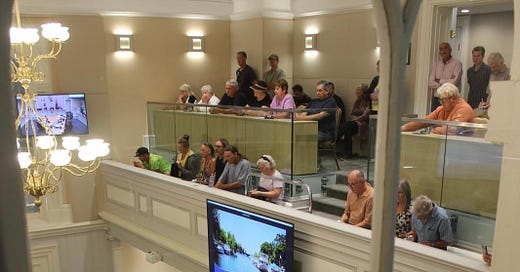Code of Conduct for Town Hall Initiative
Engaging Councils & Law Enforcement with Integrity
Why a Code of Conduct Matters
Civic engagement is a powerful tool for restoring local governance and ensuring our voices are heard. However, to be effective, our participation in town hall meetings, council sessions, and interactions with law enforcement must be strategic, respectful, and solution-oriented.
A well-organized delegation not only commands attention but also fosters credibility. By presenting ourselves professionally, adhering to decorum, and offering constructive solutions, we make a lasting impact.
As Scripture reminds us: “Let your speech always be gracious, seasoned with salt, so that you may know how you ought to answer each person.” (Colossians 4:6)
The Ground Rules for Council Meetings
Many municipalities have strict procedural bylaws governing public participation. Understanding these rules ensures that our voices are heard without giving councils an excuse to dismiss us.
Key Etiquette for Council Meetings:
✔️ Remain in Designated Areas – Do not approach the council floor unless invited.
✔️ Maintain Professionalism – No shouting, booing, or outbursts.
✔️ Follow Speaking Protocol – Address council only during designated times.
✔️ Avoid Signs & Banners – Many chambers prohibit these unless pre-approved.
✔️ Dress Business Casual – A professional appearance strengthens credibility.
✔️ Sing 'O Canada' – A unified show of patriotism is powerful.
🔗 Procedural Bylaw Reference – City of Kawartha Lakes
Communicating with Council & Law Enforcement
Before attending a meeting, and inviting a large crowd, it may be wise to notifylaw enforcement. Transparency builds trust and ensures smooth proceedings.
Sample Notice for Town Council & Law Enforcement:
📌 We are notifying you of an upcoming delegation and wish to engage in effective communication.
📌 We will be attending the [Town Hall Meeting] on [Date, Time] with a large delegation of community members.
📌 Our goal is to support the presention of well-researched concerns and solutions in a professional and respectful manner.
📌 We are aware of and will adhere to the procedural bylaws and criminal code provisions regarding public order.
📌 Should any individuals attempt to disrupt the meeting, we request your assistance in addressing those not aligned with our initiative.
📌 We welcome feedback on best practices for public engagement moving forward.
This preemptive communication demonstrates responsibility and sets a constructive tone before the meeting even begins.
The Power of Professionalism: Why This Approach Works
If we want local councils and law enforcement to take us seriously, we must exceed the expected standards of behavior. Disruptions, hostility, or disorderly conduct only weaken our credibility and sabotage our efforts.
👥 One person in attendance represents a thousand others. Our decorum speaks volumes.
⚠️ Avoid False Flag Scenarios – Outside agitators or provocateurs may attempt to derail our mission. By clearly stating and adhering to our code of conduct, we ensure their behavior does not reflect on us.
If an individual violates decorum, we must be able to say:
➡️ "They are not affiliated with us. We do not support disorderly conduct. Our delegation respects council protocols."
➡️ "We appreciate any assistance in maintaining order so that the meeting remains productive."
This proactive stance ensures our credibility remains intact while allowing law enforcement to address genuine disruptions.
Going Beyond Attendance: Presenting Solutions
Showing up is not enough. A successful delegation offers well-researched solutions.
How to Make an Impact:
📢 Research Municipal Policies – Understand the local laws affecting your issue.
📢 Prepare a Clear, Concise Speech – Stay on point and avoid emotional rambling.
📢 Bring Data & Expert Testimony – Well-referenced facts are harder to dismiss.
📢 Propose a Practical Solution – Offer a clear, actionable alternative.
📢 Follow Up in Writing – Submit a formal document summarizing key points.
🔗 Guide to Writing Effective Council Delegations - Coming Soon
Final Thoughts: Leadership Through Action
When we engage with integrity, we change the narrative. We shift from being dismissed as “angry citizens” to being recognized as informed advocates for real solutions.
The true mark of leadership is not found in opposition alone—it is found in service, preparation, and constructive action.
📩 Join the Movement – If you are organizing or participating in a delegation, let’s coordinate efforts nationwide. Together, we can restore local governance and accountability.




